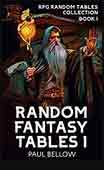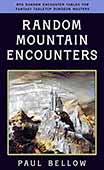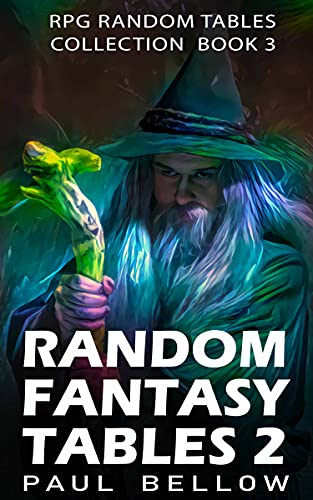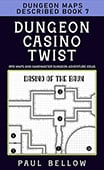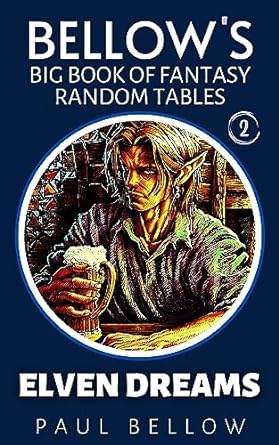Roleplaying is a game of make-believe, and its biggest secret is written right in the rules: you’re here to create a living, breathing story, not to perform a flawless, clinical simulation. Yet, somewhere amid all those dice rolls and rulebooks, many Dungeon Masters convince themselves the only way to honor the game is to play it with an ironclad, behind-the-screen honesty. Here’s the truth that few will admit aloud: it’s okay—even essential, sometimes—for a Dungeon Master to lie.
Before you picture treachery, manipulation, or shattered trust, let’s be clear. The “lies” we’re talking about aren’t betrayals; they’re the subtle sleight-of-hand that nudges the game back onto the track when something threatens to derail the fun. Maybe you fudge a dice roll to save a party from an anticlimactic TPK or quietly retcon an NPC’s motives because the players came up with a deeper, more compelling theory than you did. These are gentle adjustments, never blunt betrayals, and they exist purely to protect and enhance the shared dream at your table.
Of course, amongst seasoned GMs and D&D veterans, even a whiff of “fudging” can draw side-eyes and judgment. Some wear their commitment to untarnished chance as a badge of honor. But this stigma isn’t just unnecessary—it can be actively harmful. Fear of ever “cheating” the RNG can sap the life from a session, leading to flat moments, sudden party wipes, or the kind of tonal whiplash that reminds everyone this is, after all, just a game.
This article isn’t a blanket permission slip for anything-goes trickery. Instead, it’s a rallying cry for the Dungeon Masters brave enough to wield their power ethically and strategically. The best lies are both rare and intentional—tools to heighten emotion, facilitate pacing, and surprise players, never to negate their victories or sense of fairness.
Ultimately, a Dungeon Master’s greatest responsibility is to serve the story, maintain flow, and keep players engaged in the fiction. If an unseen lie here or there is required to achieve that—to keep your table in a state of wide-eyed immersion—don’t be afraid to pick up the mask. The secret isn’t that you can lie; it’s knowing when, why, and exactly how to do it.
When and Why DMs Might Lie
Every DM faces crossroads where the unvarnished truth would drag the story through the mud. Maybe the party’s clutch rogue flubs yet another perception check just before finally uncovering a murderer’s identity, derailing weeks of build-up. Maybe the session’s big boss winds up felled by a single lucky critical in the opening round, robbing the battle—and the table—of its hard-won tension. These are the moments ripe for a little careful, deliberate deception.
Try my AI Tabletop RPG generators...and an extensive library of content!
Pacing is another fertile ground for DM discretion. Sometimes, dice rolls introduce interminable delays just as the excitement is peaking, or a key player’s absence creates narrative gaps that demand a gentle white lie to smooth out. The game’s natural flow can become choppy, and a well-placed fib is sometimes the invisible glue that binds the story’s tempo back together.
And then there are the perils of lethality. Nobody wants to coddle their players, but even the most fearless party isn’t served well by dying pointlessly from an errant manticore swipe or a failed save on a fluke. Gently tweaking enemy tactics or quietly discounting an unlucky attack roll isn’t cheating, it’s generosity in service of a memorable tale.
The real art lies in balancing storytelling possibility with letting the dice have their due. If you rescue the players from every scrape, the sense of risk—and triumph—evaporates. But too rigid a faith in chance can destroy the campaign’s rhythm, robbing it of emotion and stakes. The best Dungeon Masters understand the difference between guiding hands and puppet strings.
Used wisely, these little deceptions are tools, not crutches. They spark tension, sharpen surprise, and deepen drama—always layered, always sparingly used, and always in service of the players’ enjoyment. Game night isn’t a test—it’s theater, with you as its master of ceremonies and secret architect.
⚔️ Fantasy RPG Random Tables Books
Make life as a Gamemaster easier…
If you play Dungeons & Dragons, Pathfinder, or other fantasy RPGs, this
RPG random tables series
is packed with encounters, NPCs, treasure, and more. Available in eBook or print—either way, you’ll have a wealth of adventure ideas at your fingertips.

Lies That Serve the Story
Narrative lies are the DM’s secret weapon—a finely honed blade kept sheathed until the moment demands its precision. These deceptions aren’t about stealing agency or control, but about fostering drama, deepening mystery, and elevating the campaign’s emotional resonance.
Imagine the heartbreak of a beloved NPC’s “death,” only for players to discover (after their hard-won vengeance and existential soul-searching) that they survived, twisting expectations and prompting genuine catharsis. Or think of those tangled webs where subtle foreshadowing hinges on secrets only you know—subtle shifts in timelines, motivations, or events that heighten each reveal.
Sometimes, the best stories happen when the DM allows the players to run with wild, creative ideas—even if it means massaging the “official” solution to a puzzle or handwaving a seemingly insurmountable plot snag. These are the lies that empower players, welcoming ingenuity and rewarding lateral thinking.
Above all, narrative lies aren’t about deception for its own sake—they’re a pact: “I want you to feel something.” When you adjust the timeline or withhold a dark secret for dramatic effect, you’re not undermining the game’s rules; you’re elevating its heart.
Examples of story-driven lies a DM might use:
- Faking the death of an NPC for a later dramatic return.
- Retconning an NPC’s motivation to better fit player speculation.
- Imbuing a recurring villain with powers or a backstory revealed only when needed.
- Creating false prophecies or red herrings to mislead and thrill.
- Pretending a player’s wild puzzle solution is “the right one.”
- Secretly moving key locations to accommodate player routes.
- “Discovering” a magical artifact right when a character needs it most.
- Temporarily hiding the true effect of a cursed item until the perfect moment.
- Tweaking a villain’s goal based on player theory, making them prophets of their own doom.
- Changing the identity of a story’s betrayer at the last minute.
- Withholding the actual timeline of past events until the reveal climaxes.
- Granting a once-throwaway NPC deeper ties to a character’s backstory.
- Masking the real cost of a magical bargain until a defining choice.
- Fudging a letter or clue’s contents after hearing player guesses.
- Fabricating a “hidden passage” when the party is stumped, just to keep momentum.
- Shifting a villain’s lair location based on dramatic timing.
- Reimagining a relic’s powers based on player interaction, rather than sticking to notes.
Great DMs use these narrative tweaks with a steady hand and open eyes—never erasing the players’ choices or outs, but bending the world just enough to let the fiction breathe.
Still, discretion is everything. Reveal these backstage manipulations, and the magic can shatter. But let them pile up or contradict too often, and even savvy players begin to sense the seams in the dream. Remember: temporary narrative lies should deepen the players’ emotional investment, giving them satisfying payoffs and jaw-dropping revelations, not just misleading them in circles.
If you alter the facts, do it for the story’s soul—never to outfox your players or paint yourself into a corner. Story-driven deception should be a lens, never a blindfold.
Lies That Maintain Pacing
A D&D session that drags can kill suspense faster than any goblin ambush. Great pacing is the unsung rhythm of a memorable campaign, and sometimes—just sometimes—keeping that tempo means bending, stretching, or outright ignoring “what should have happened” according to the dice.
Take combat, for instance. What feels epic in theory often devolves into tedium as initiative rounds tally on. A veteran DM knows when to shave a few enemy hit points or retcon a critical miss as a glancing blow, just to keep the fight from grinding into overtime and boredom.
Exploration, too, can suffer under the weight of strict honesty. Sometimes travel scenes or encounter tables threaten to swamp the table with filler, eating precious real-world minutes and energy. A smart lie—maybe a shortcut, maybe magical NPC intervention—swoops in to skip the slog and get the party to the good stuff.
Pacing also rears its head when the night’s almost over and narrative beats are still hanging unresolved. Fewer random encounters, bending “prep” to steer toward a meaningful climax, or smoothing over forgotten plot hooks—all fair game if they keep the session feeling alive.
⚔️ Fantasy RPG Random Tables Books
Make life as a Gamemaster easier…
If you play Dungeons & Dragons, Pathfinder, or other fantasy RPGs, this
RPG random tables series
is packed with encounters, NPCs, treasure, and more. Available in eBook or print—either way, you’ll have a wealth of adventure ideas at your fingertips.
Remember: nobody comes to the table to watch dice fall for the sake of watching dice fall. They show up for the pulse, the drama—the honest sense that every moment matters. Sometimes, the best pacing is the lie that keeps everyone at the edge of their seats.
Examples of pacing-focused lies:
- Silently reducing a powerful monster’s HP.
- Skipping random encounters to get to the dungeon’s climax.
- “Forgetting” a lair action when it would slow things down.
- Giving players a magical fast-travel ride out of a dull landscape.
- Inventing a shortcut or hidden path in a dungeon at just the right time.
- Describing a falling bridge repair faster than the rules would allow.
- Cutting travel time with hand-waved montage scenes.
- Having an NPC provide supplies or healing to skip logistics.
- Ignoring or simplifying encumbrance when it bogs the action.
- Introducing a weather event or environmental obstacle as a pacing device.
- Handwaving missing door keys or puzzle answers if the group is stuck.
- Having monsters retreat or surrender instead of fighting to the last.
- Quietly skipping “filler” content to land at a big reveal on schedule.
The artistry of pacing deception lies in making the game feel quicker and sharper, while honoring the story’s needs. Nobody remembers how exactly the party got out of the forest—they just remember the feeling of sprinting, the breathless arrival, the sense that the world is moving with them, not against.
Prioritizing narrative flow over strict realism isn’t “cheating”—it’s respecting the commitment, energy, and enthusiasm of your players. When in doubt, ask yourself: will this drag down the table’s momentum, or keep them hungry for what’s next? Choose wisely, and the pacing lie becomes invisible, seamless, a part of the magic that keeps the tale alive.
Lies That Protect Player Investment
D&D is not just dice and stats; it’s the emotional bond forged between character and world, table and story. Sometimes dice betray that relationship, threatening to rip players from triumphant arcs or to cut beloved journeys short just as they find their stride. The right DM lie can protect this investment, turning heartbreak into heroism, failure into meaning.
No one forgets the party member who gets their last words in before the villain’s blade drops, or the hapless hero who finally finds their missing mentor, just when their resolve is about to falter. These moments don’t always happen naturally—sometimes, they’re crafted by a DM willing to whisper to the universe, “wait just one more minute.”
Skill checks and saves often create similar crossroads. Did the bard really flub the one persuasion that would win the king’s heart? Did the ranger’s critical miss doom the party when everyone was counting on them? Sometimes, the story is better served by a quiet retcon or a subtle fudge, giving heroes the payoff or closure they crave.
Backstory arcs are perhaps the most sacred ground. Letting a character’s past collide with plot events at just the right time, or bending the world’s logic to intertwine destinies, is a kind of gentle manipulation players rarely regret. Done right, these lies aren’t cheats—they’re gifts.
The ultimate aim is to keep players invested, their hearts beating in sync with every twist and turn. If a tiny lie lets someone earn their victory, deliver their speech, or save a friend against the odds, it’s a grace note—not a betrayal.
Examples of lies that enhance emotional moments:
- Delaying a killing blow so a hero can deliver a final monologue.
- Allowing a missed check to succeed if it completes a critical character arc.
- “Coincidentally” arranging for a party member’s family to reappear at a pivotal moment.
- Pretending an enemy “misses” so a paladin can pull off a sacrificial rescue.
- Silently adjusting hit points to allow a dramatic last stand.
- Overlooking a failed perception check so the party doesn’t miss key clues.
- Weaving a player’s secret backstory into the main plot on the fly.
- Staging a fake betrayal to deliver an emotional gut-punch, only to reveal the truth later.
- Making a magic item function differently to suit a character’s need or dream.
- Granting reprieve from a deadly trap at the last second for maximum tension.
- Adjusting NPC personalities to better reflect character development.
- Orchestrating a “coincidental” rescue from an old friend or rival.
- Crafting an impromptu “miracle” to avoid demoralizing party wipes.
- Providing a meaningful last connection before a character’s honorable death.
- Quietly making a villain’s attack non-lethal to allow for a redemption arc.
The power to lie for the sake of heart and connection is a responsibility, not a right. DMs should read the room—some groups crave consequence above all, others revel in the drama of near-misses and second chances. If you choose to alter reality, do it with the players’ investment, not your own agenda, in mind.
When in doubt, discuss expectations up front or gauge reactions after the session. The best lies are the ones that deepen the story’s resonance—not those that rob the players of their triumphs, fears, or tears.

Examples of Lying in Action
Let’s move from theory to practice: What does lying as a Dungeon Master really look like in a living, breathing campaign? Sometimes, it’s brazen—a last-minute fudge to avert a disastrous anticlimax. Other times, it’s imperceptible, a single grain in the stew that flavors an entire arc.
Try my AI Tabletop RPG generators...and an extensive library of content!
Imagine a tense duel where a player’s dice “should have” failed, but you, sensing the arc’s momentum and the room’s energy, let the attack land anyway, gifting the moment with gravitas. Or recall the time you let the “wrong” character find the MacGuffin, simply because their reaction would be more compelling—and the story soared because of it.
Some of the most beloved campaigns are filled with these hidden lies: the tense moment when the villain’s plan just happens to unfold right when the party is watching, or the inexplicable twist when their wildest theories are “proven right” by a world that you, in truth, bent to their collective will.
These aren’t just gaming tricks—they’re love letters to player investment, carefully curated moments that would never have happened if the dice alone were in charge.
| Scenario Name | What Was Lied About | Why It Worked | Potential Risks If Discovered |
|---|---|---|---|
| The Hero’s Last Stand | Extended a player’s HP for one more turn | Gave a final speech, catharsis | Players may feel outcomes are fake |
| The Secret Door | Created a shortcut when party got stuck | Prevented session from stalling | Removes feeling of player agency |
| The Smiling Assassin | Changed an NPC’s role based on player guess | Enhanced foreshadowing | World may feel inconsistent |
| The “Random” Encounter | Skipped an overlong travel battle | Kept pacing brisk and tense | Players may sense forced events |
| The Cursed Chalice | Delayed cursed item effect for drama | Made reveal more impactful | Distrust in item descriptions |
| The Improbable Success | Fudged a failed check into a “lucky break” | Rewarded ingenuity, excitement | Breaks trust in dice system |
| The Villain’s Escape | Ignored rules to let BBEG survive | Allowed for future tension | Risks feeling “railroaded” |
| The Puppet Strings | Altered NPC motivations post-hoc | Tied in player backstories | Perceived as DM manipulation |
| The Furious Duel | Reduced monster attacks to avoid wipe | Built narrative climax | Less tension if discovered |
| The “Lost” Letter | Added new clue after session start | Re-energized mystery-solving | Players may expect more “miracles” |
Patterns here are clear. Each lie, at its heart, is in service of a greater purpose—heightening drama, smoothing play, granting players the feeling that the world truly reacts to them. None are simply conveniences for the Dungeon Master; each is a calculated risk taken for the table’s good.
And every lie carries a shadow. If mishandled or abused, these quick fixes can erode trust, replacing earned emotion with suspicion. But when used with clarity, intent, and artistry, they become the lifeblood of campaigns that linger on in memory—legendary not for their mechanics, but for their magic.
The Ethics of Lying at the Table
At the core of any great game is trust—a bond built by countless hours of dice-rolling, shared stories, and collaborative triumph. When you lie as a Dungeon Master, even for the best reasons, you always risk that trust. The secret is to wield deception sparingly, and to always remember: your players are not your “opponents.” They are your partners.
A wise DM knows that most deception should exist only “in the moment.” Outside those high-tension seconds, transparency and honesty foster the best long-term groups. If a player questions whether a result was “real,” or is worried about their choices mattering, open up a little. Some secrets can—and should—be revealed outside of session, contextualizing your decisions and proving that your number one allegiance is to the campaign, not to being “right.”
Ultimately, the distinction between storytelling lie and betrayal is thin and fragile. Players can tell when the scales are tipped. Seek to preserve the world’s sense of fairness, agency, and possibility, even when you’re secretly bending the rules for the greater good.
Lies That Go Too Far
But what happens when lying crosses that invisible line? When it stops being an act of creative generosity and becomes a bludgeon? These are the lies that break campaigns—and friendships:
- Ignoring a natural 20 on a crucial achievement or attack.
- Rewriting major character decisions without consulting the players.
- Changing established world lore retroactively to suit DM needs.
- Forcing a plot outcome regardless of player actions (“railroading”).
- Making every big revelation a lie, voiding previous victories.
- Faking core game mechanics for “surprise” or DM convenience.
- Secretly undoing player choices between sessions.
- Making entire arcs or campaigns a “dream” or setup without hints.
- Denying player agency in climactic moments.
- “Adjusting” combat so players never lose, even when earned.
- Invalidating PC backstories or bonds for shock value.
- Telling one player a secret, but revealing it differently to the group.
- Pretending the party “can’t” access areas arbitrarily.
- Retconning death or betrayal without player buy-in.
Each of these tricks chips away at the core pillars of TTRPG fun: meaningful choice, fair play, and collaborative trust. If you find yourself reaching for these “tools” week after week, it’s time to reconsider your approach—or discuss expectations with your group.
Do not wield such lies lightly. Only the rarest, most narratively-justified exceptions should breach these boundaries, and even then, only with transparency or player permission after the fact. Repeated misuse of these mind-bending tricks breeds resentment, apathy, or outright departure from your table, shattering the campaign’s foundation.

Communicating After the Fact
Once the smoke clears and the session’s adrenaline fades, should you admit your lies? Every Dungeon Master wrestles with the “big reveal”—and it’s a question with no single answer. Sometimes, the truth enhances player appreciation, offering that “aha” moment of respect and satisfaction. Other times, it disrupts the very magic you sought to preserve.
⚔️ Fantasy RPG Random Tables Books
Make life as a Gamemaster easier…
If you play Dungeons & Dragons, Pathfinder, or other fantasy RPGs, this
RPG random tables series
is packed with encounters, NPCs, treasure, and more. Available in eBook or print—either way, you’ll have a wealth of adventure ideas at your fingertips.
Revealing your manipulations can inspire mature, meta-aware play—strengthening campaign trust, showing your respect for players, and inviting collaborative worldbuilding. But it can also demystify or diminish the raw excitement players felt in the moment. Worse, if used recklessly, it can make players suspicious and second-guess future moments.
Transparency is a powerful tool, especially for mature tables or after campaigns conclude. With careful timing, “pulling back the curtain” aligns you and your players as co-authors, not adversaries. But there are moments—especially in ongoing arcs—where the magic is best left unspoiled.
Strategies for revealing (or not revealing) DM lies:
- Save secrets for a campaign “wrap-up” or farewell session.
- Reveal only to specific players whose arcs were directly impacted.
- Drop hints in-game, letting clever players uncover the truth.
- Keep notes and share them as a “DM’s diary” after big arcs.
- Announce retcons immediately if confusion might arise.
- Use out-of-game channels (Discord, email) for mature disclosure.
- Never reveal, and let the legend stand if it fuels enjoyment.
- Reveal “harmless” lies (like dice roll fudging) to encourage trust.
- Have a group debriefing for major story twists or surprises.
- Let players ask questions in a “no consequences” setting.
- Reveal only when the truth strengthens trust in future storytelling.
Whatever path you choose, remember: your job as Dungeon Master is to serve the joy, wonder, and trust at your table. Sometimes, honesty after the fact fosters respect and collaborative growth. Other times, a little mystery serves the campaign best, preserving the magic of a world just a little larger than life.
Ultimately, weigh each decision with both narrative and emotional intelligence in hand. There’s power—and risk—in every reveal.
Making Lying Work for Your Campaign
No Dungeon Master ever gets this balance perfect on their first try. The art of lying—like all DMing skills—matures through careful experimentation. Start small: nudge a dice roll here, adjust a minor NPC detail there, and always gauge how your table responds.
The best DMs keep a finger on the pulse of the group. Are players more engaged after you saved the big reveal? Did a fudge break immersion, or did it spark drama? Use feedback—verbal and nonverbal—to tune your interventions. Is the fun flourishing? If not, back off and try a different approach.
And, always, the golden rule: don’t lie to avoid consequences. Lie only to enhance the shared story and your players’ investment. If it’s just a shortcut for you, or a way to avoid prep or mistakes, step away. It’s a tool—not a safety net for sloppy DMing.
Tools to Track Your Lies
Every fib, fudge, or retcon sown into your campaign echoes through future sessions. Forget where you bent the truth, and you risk plot holes, contradictions, or confusion that can sap all the magic away. That’s why the best DMs keep quiet, detailed notes—hidden reminders of every narrative nudge and altered truth.
Private note-taking apps, physical notebooks, or even sticky notes can serve as your backstage ledger. Jot down when you moved an NPC, invented a shortcut, or tweaked an artifact’s origin. Track not just what’s “real” for you, but what’s “real” for the players.
Over multiple sessions, consistency becomes king. The story must feel seamless, even if you’re the only one juggling shifting facts and timelines. Playtesting reveals that it’s often less about the lie itself—more about how well you can sustain it until the payoff.
| Type of Lie | How to Track | Prepare For Possible Reveals |
|---|---|---|
| NPC identity swaps | Note new motivation, timeline | Prepare “origin” stories or clues |
| Monster stat tweaks | Mark session/monster, new HP/AC | Keep rationale for pacing/engagement |
| Cursed item delayed effects | Note triggers and who handled it | Timeline/recap for reveal |
| Timeline retcons | Log event changes, old vs new order | Consistent clues in flashbacks |
| Puzzle solution flexibility | List allowed solutions, actual result | Design justification for DMG/world logic |
| Secret villain reveals | Note shift, update clues given | Retcon logs for discussion post-arc |
| Fudged skill checks | Mark which were fudged/why | Note impact on plot/backstory |
| Skipped random encounters | Record which were omitted and effects | Log reasoning if asked |
| Backstory intersections | Note which PCs were “coincidentally” present | Be ready to explain coincidences |
| Dramatic false deaths | Log pretense, reappearance plans | Plan emotional payoff or confession |
| Travel time shortcuts | Update travel logs/party assumption | Keep travel maps internally updated |
| World lore alteration | Track changes to geography/history | Prepare lore “explanations” for Q&A |
Even small lies can sow seeds that flower sessions later. With diligent tracking, you’ll avoid the pitfalls of shattered continuity, contradictory NPCs, or lost foreshadowing. Done right, the patchwork never shows.
The best DM secrets are always the ones you never have to explain—but that only works if you never forget them yourself.
Player Types and Lying Styles
Every table of adventurers is unique—a tapestry woven from tactical brains, starry-eyed storytellers, and ever-curious meta-gamers. Some players want ironclad fairness; others crave soap-opera fireworks; a few love the puzzle of poking behind the DM’s curtain.
Tactical players, for instance, may bristle if they sniff out monster stat fudging or arbitrary retcons—what matters most to them is rules clarity, transparency, and reliable odds. Narrative-first players relish emotional twists, surprise reveals, and twists of fate—even if a few details don’t quite add up beneath the surface.
Meta-minded players, meanwhile, often delight in “catching” the DM at their game, speculating about the invisible hand guiding world events. For them, a well-timed reveal is candy—the thrill is in the hunt, not always in the result.
Customizing your style of deception—if you choose to wield it—means reading the room with more than just your eyes. Listen for what sparks joy, frustration, confusion, or raw exultation. Adapt with care, and never be afraid to discuss expectations.
Player archetypes & their likely response to DM lies:
- The Rules Lawyer: Notices dice fudging, demands transparency.
- The Roleplayer: Loves narrative twists, accepts plausible lies.
- The Tactician: Hates hidden mechanical lies, craves challenge.
- The Explorer: Appreciates logistical shortcuts and pacing tweaks.
- The Storyteller: Delights in emotional or backstory-driven deception.
- The Meta-Gamer: Enjoys catching and speculating about lies.
- The Casual Gamer: Unlikely to notice, happy if story flows.
- The Puzzle-Solver: Loves clever twists, dislikes arbitrary retcons.
- The Power-Gamer: Resists stat fudging, expects risk/reward balance.
- The Newbie: May not notice deceptions; values fun and spectacle.
- The Immersionist: Prefers internal story consistency over rule strictness.
- The Genre Fan: Enjoys surprise reveals and thematic twists.
- The Social Butterfly: Responds well to emotional or relationship-based drama.
- The Skeptic: Distrusts too much DM intervention; values agency.
- The Collaborator: Welcomes discussions about storytelling tricks.
Pay attention to the subtle cues your group sends. If you spot disengagement, confusion, or regular skepticism, it may be time to pull back on the hidden manipulations—or (gasp!) even talk about them openly.
The heart of great Dungeon Mastering isn’t in sticking to secret plans. It’s in knowing how, when, and why to bend or break them in service of the players—never yourself.

Final Thoughts on Lying as a DM
To master the art of Dungeon Master deception is to walk a tightrope stretched taut between drama and disillusionment. The richest D&D sessions are those where the story feels alive—unpredictable, electric—but never arbitrary or unfair.
Lies and tweaks, used in moderation, don’t cheapen your campaign—they enrich it. They turn close calls into epic victories, fill dead air with breathless chase scenes, and allow character arcs to land with thunder instead of fizzling out just shy of their mark. Think of lies as seasoning, not the main course: too little, and your meal is bland; too much, and you spoil every bite.
Always, the dictate must be: does this serve the players? Is this in service of a moment they’ll remember, a story they’ll tell, or a clutch decision they’ll relive in glory and laughter? If not—if the lie is there to save your own skin, avoid hard prep, or force your vision—it’s better left untold.
There are risks. Bend the truth too far, and trust snaps. Abuse your invisible power, and even the most loyal players will drift away, feeling unmoored from a world that no longer feels like theirs to shape. Emotional intelligence, empathic reading of your group, and honest post-game discussions: these are the true tools of the Dungeon Master.
So don’t be afraid of the occasional, strategic, lovingly-crafted lie. Honor the dice, respect the rules, but remember—your greater loyalty is to the shared illusion, the living fiction, and the wonder on your players’ faces when the story sings.
⚔️ Fantasy RPG Random Tables Books
Make life as a Gamemaster easier…
If you play Dungeons & Dragons, Pathfinder, or other fantasy RPGs, this
RPG random tables series
is packed with encounters, NPCs, treasure, and more. Available in eBook or print—either way, you’ll have a wealth of adventure ideas at your fingertips.
In the end, this is what separates legendary campaigns from the forgettable ones: the courage not just to follow the rules, but to know when, how, and why to slip behind the curtain and shape the tale—with a wink, a nod, and a promise to always put your players first.


